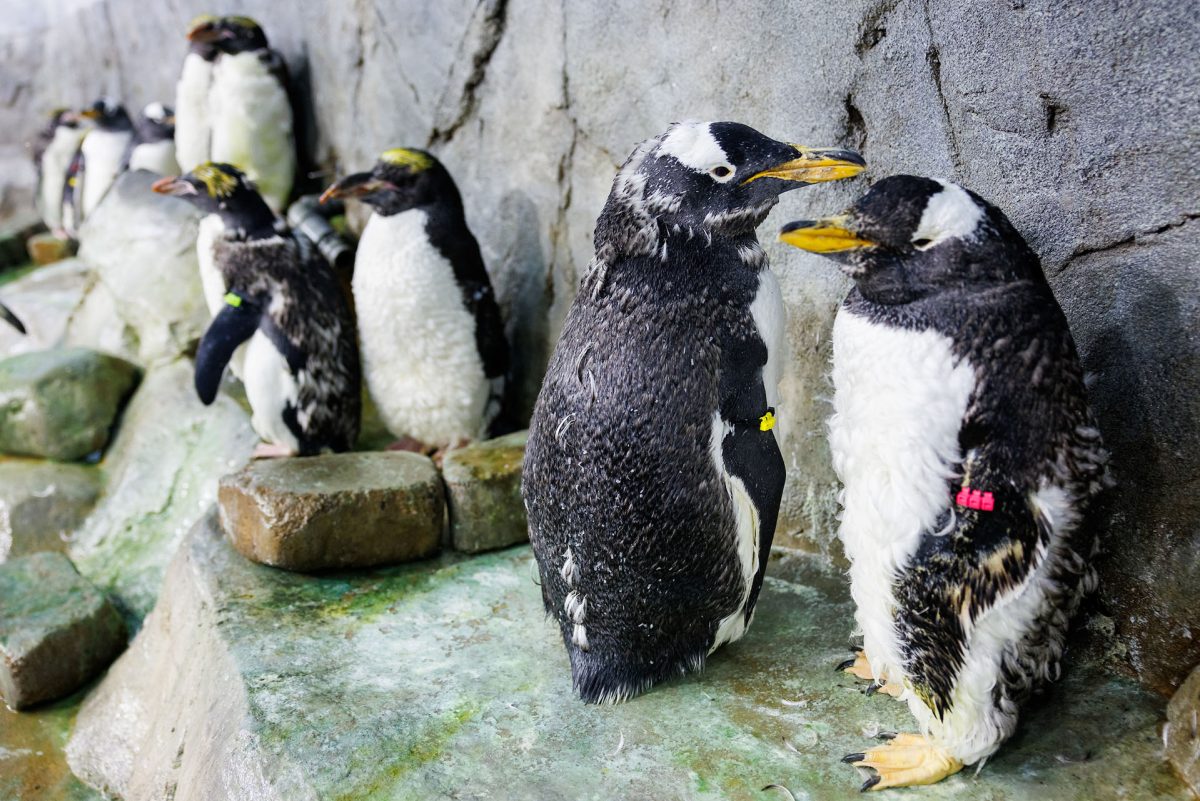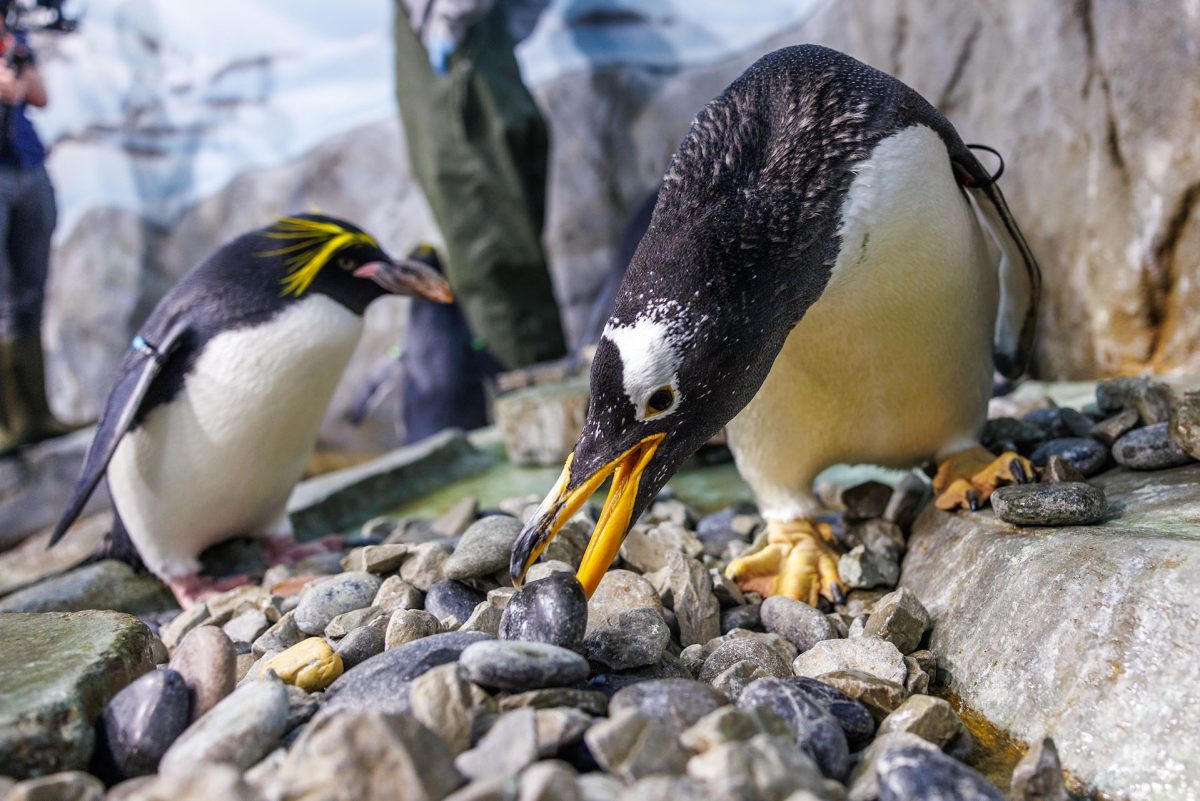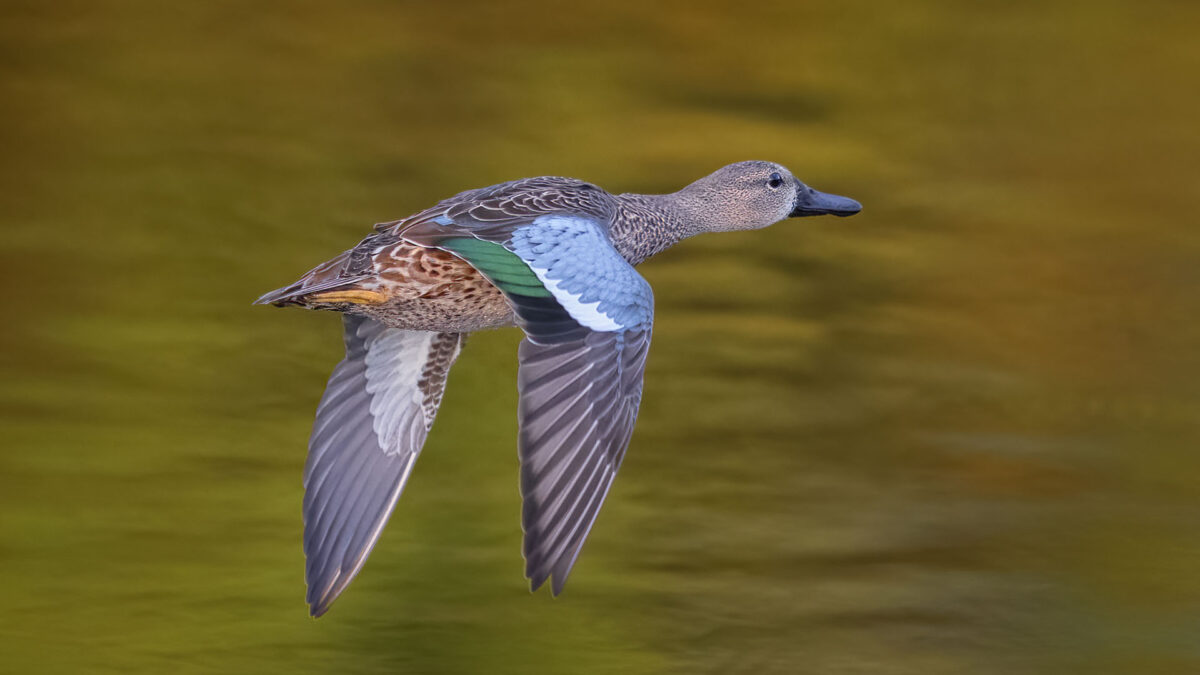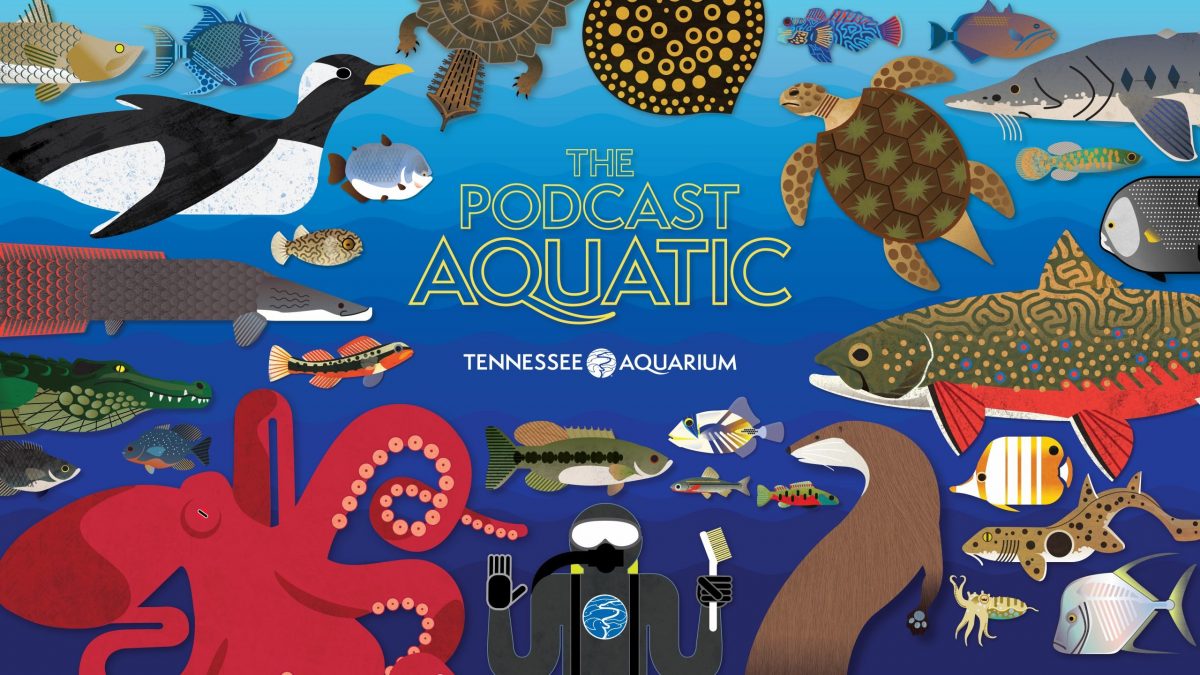Here in Chattanooga, winter — to paraphrase a popular fantasy series — is most definitely coming, but in the vast, perpetually chilly reaches of Antarctica, summer is just over the horizon.
Penguins are almost exclusively native to the southern hemisphere (the lone exception being the Galapagos Penguin). While there are a few species that can be found northward in places like Australia and Chile, most dwell along the Antarctic coastline and on sub-Antarctic islands.
That means wild penguins living in these southerly climes are currently experiencing nesting season, with industrious penguin parents hard at work caring for their newly hatched chicks.
For the Gentoo and Macaroni Penguins in the Penguins’ Rock exhibit at the Tennessee Aquarium, however, the seasonal script is flipped. Since Chattanooga is located in the northern hemisphere, our seasons are reversed from what penguins would experience in their wild habitats.
Tennessee is currently experiencing the last days of autumn with days that steadily dwindle, shorter and shorter. Unlike their wild cousins, the Aquarium’s colony have long since finished nesting, have undergone their annual molt and — like their human caretakers — are experiencing the shift into winter through biological cues triggered by gradual changes to the lighting in their habitat.
Recognizing seasonal changes is important for penguins. Nesting in the spring gives them an entire summer to raise chicks until their offspring are mature enough to survive the harsh, potentially resource-poor winter. Molting — the process of shedding old feathers — at the end of nesting season allows them to build up healthy layers of new insulating feathers, which ensure wild penguins remain safe and warm during the sub-zero temperatures of the Antarctic winter.


Left: Molting is triggered by the changing photoperiod and helps prepare penguins for a harsh winter ahead. Right: Nesting season, when Gentoo and Macaroni penguins make nests from rocks to safeguard their young, is also cued by the gradual lengthening of days.
Since temperatures in Antarctica rarely rise above freezing, even in the warmest months, penguin biological clocks rely almost entirely on changes in light and day length to know when it’s time to do all these things. To a penguin, the gradual decline in daylight signals the onset of winter, while longer days mean spring is on its way.
In Penguins’ Rock, that’s all accomplished through a carefully planned lighting schedule that mimics the seasonal changes occurring outside the building.
It all begins with the gentle illumination of an artificial dawn.
“You wouldn’t want to be woken up by lights turned on suddenly at full blast, and they don’t either,” explains Assistant Curator of Forests Loribeth Lee. To prevent this harsh awakening, an initial set of lights angled from a catwalk railing above the gallery is activated and brightened gradually to mimic the first rays of the sun cresting the horizon.
Next, lights in the exhibit ceiling turn on before the exhibit’s brightest lights are gradually intensified to reproduce a true sunrise.
Most days, the exhibit is fully lit by 8:30 a.m. to give the penguins caregivers time to begin their routine of feeding and caring for the birds.
At the end of the day, that process proceeds in reverse.
The timing of sunset changes based on the season being replicated. During the (northern hemisphere’s) summer, when days are longest, Penguins’ Rock experiences 15 hours and 30 minutes of daylight in June and July. In early January, a wintertime “day” can last as little as 10 hours and 15 minutes.
“The length of days changes every two weeks, and that gives them all of the cues they need for breeding and molting,” Lee says. “Our rocks usually go out for breeding season in early April, but they know this is coming in March because they can tell the days are getting longer and longer, so they are ready to go.”
Using the day’s photoperiod as a seasonal cue makes perfect sense for Antarctic colony birds like penguins because they often live in rocky or barren locations that don’t have other seasonal indicators like changing leaves or highly variable temperatures that can alert animals to seasonal shifts.
“They don’t have all of these cues that other birds would get, which is why lighting is incredibly important to them,” Lee says.
Just like the rest of us, the Aquarium’s penguins will experience shorter, darker days in the coming weeks, but don’t despair. Spring is waiting just around the corner, with its frenzied rush of courting and breeding activity to help the birds shake off their winter doldrums!
Watch: Rock out to the start of penguin nesting season!

